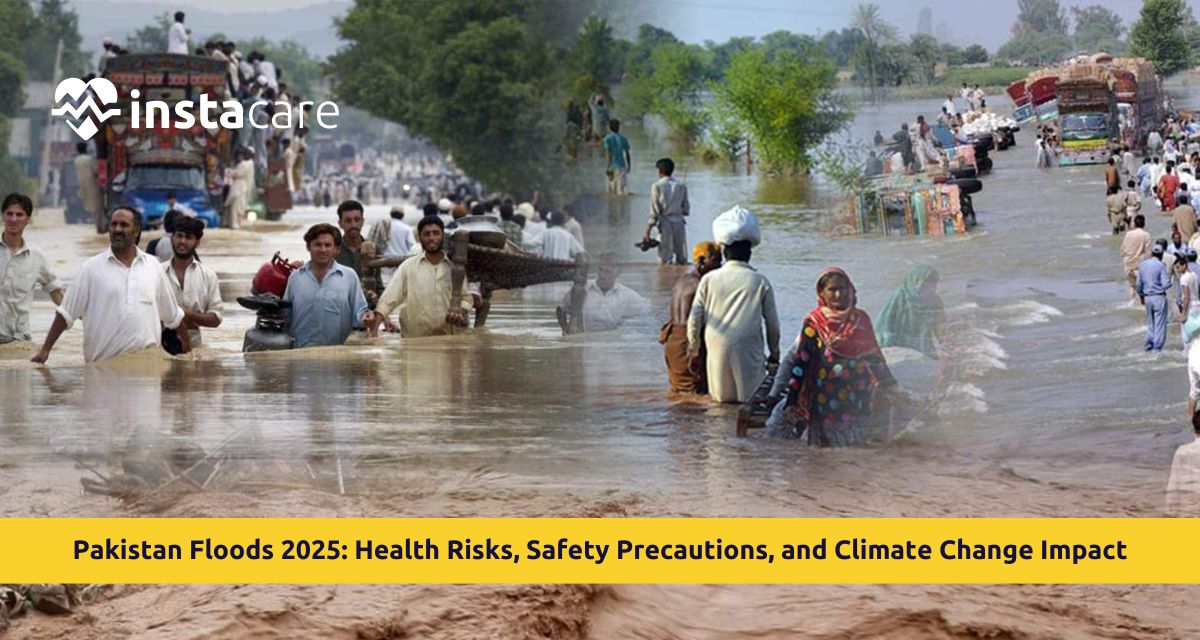Lahore, August 2025 – Pakistan is currently facing one of its most devastating flood emergencies in years. From flash floods in Khyber Pakhtunkhwa to widespread river flooding in Punjab, Sindh, Balochistan, and Azad Kashmir, the humanitarian crisis is worsening with every passing day.
The Scale of the Disaster
The floods have caused large-scale destruction across the
country:
- Over 800 people have lost their lives since June, including
more than 320 in Khyber Pakhtunkhwa.
- Nearly 1 million people have been evacuated in Punjab, with
up to 1.2 million affected in the eastern parts of the province due to overflowing
rivers.
- According to the National Disaster Management Authority
(NDMA), 799 fatalities and more than 1,000 injuries have been reported so far.
- Flash floods and cloudbursts in mountainous areas have triggered landslides, blocking roads and isolating communities.
These numbers continue to rise as rescue efforts remain ongoing in hard-hit areas.
Health Risks During Floods
Flood disasters not only destroy homes and infrastructure but also give rise to major public health concerns. Some of the most dangerous risks include:
Waterborne Diseases
Stagnant and contaminated water increases the spread of diarrhea, dysentery, cholera, typhoid, and skin infections.
Vector-Borne Illnesses
Standing water is a breeding ground for mosquitoes, leading to dengue and malaria outbreaks. During the 2022 floods, dengue cases spiked by over 850%, showing how quickly these diseases spread.
Risks for Vulnerable Populations
Older adults, children, and people with chronic illnesses are most affected during disasters. Limited mobility and lack of healthcare access make them especially vulnerable. Relief organizations have started deploying mobile clinics to support them.
The Climate Change Connection
Experts link the increasing intensity of floods in Pakistan to climate change. Warmer air holds more moisture, causing heavier monsoon downpours. Some key contributing factors include:
- Cloudbursts: Sudden “rain bombs” releasing over 100mm of
rain in an hour, now more frequent in northern Pakistan.
- Deforestation and poor drainage: Lack of natural buffers
increases flood damage.
- Unplanned urbanization: Rapid development without proper water management worsens the impact of heavy rains.
These conditions make Pakistan one of the most climate-vulnerable countries in the world.
Safety Precautions Everyone Should Follow
To stay safe during the floods and protect against health
risks, experts recommend the following precautions:
- Boil or chlorinate drinking water to prevent infections.
- Avoid contaminated food and maintain proper hygiene.
- Use mosquito nets or repellents to reduce the risk of
malaria and dengue.
- Watch for early symptoms like fever, diarrhea, or rash and
seek medical care quickly.
- Drain stagnant water around your home to stop mosquito
breeding.
- Prepare an emergency kit with food, water, and medicines.
- Avoid walking in floodwaters, as hidden currents and
contamination are dangerous.
- Check on vulnerable people—children, elderly, and those with chronic illnesses.
- Care for mental health, since displacement often causes stress and trauma.
Instacare.pk: Supporting Health During Emergencies
At Instacare.pk, we believe healthcare access should never
be interrupted, even during disasters. Our platform helps people book lab tests online, consult doctors virtually, and find trusted healthcare facilities
without the need to travel in unsafe conditions.
During emergencies like the 2025 floods, Instacare provides timely health information, awareness on disease prevention, and easy access to diagnostic services, so families can stay safe and informed.
Why This Matters
The 2025 floods are a clear reminder of how climate change
is directly affecting Pakistan’s health and safety. Alongside immediate rescue
and medical relief, the country needs long-term strategies such as better water
management, stronger healthcare systems, and climate adaptation policies.
At the same time, platforms like Instacare.pk play an important role in connecting people to healthcare services and ensuring that disease prevention and treatment remain accessible during crises.

